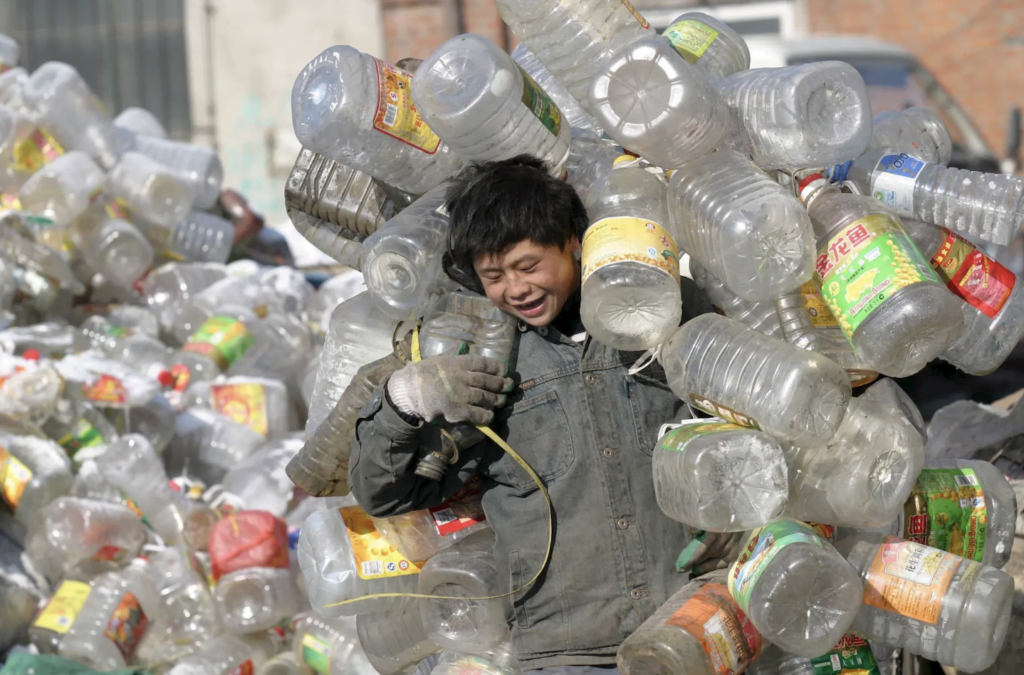The 2018 Government National Waste Report shows Australia lagged well behind comparable countries. We generated more waste than the average – 67 million tonnes – 2.7 tonnes per capita – and we recycled less.
Just 11% of the 3.5 million tonnes of plastic we use is recycled.
10% of our waste is organic and goes to landfills where it generates methane-rich greenhouse gases. Only a small percentage of this waste is converted to energy.
Plastic makes up three-quarters of the rubbish along the Australian coast, most of it generated in Australia. It pollutes waterways and drainage systems and flows into oceans, contributing directly to the death of seabirds, turtles, whales, dolphins, dugongs, fish, crabs, and crocodiles. Numerous other species are killed or maimed through entanglement.

Australia must now face up to its wasteful and polluting habits of make-take-dispose and take responsibility for the mess.
The 2019 National Waste Policy Action Plan and the Recycling and Waste Reduction Act 2020 have set worthy objectives but lack measurable targets and action is slow
Our Plan
| 1. | Fully embrace and promote the ‘circular economy‘ at all levels of government and win public acceptance that sorting, processing, treatment, and storage of waste is managed in this country |
| 2. | Set measurable targets and incentives for recycled material to replace raw materials for manufacturing and growth of future viable industries in repurposing waste material |
| 3. | Fund research and action into: – achieving a zero plastic waste economy – recovery of metals from the waste stream, – developing new battery materials and lithium battery reuse and recycling – the potential for energy generated from waste – the emerging waste issue that decommissioned solar panels will bring, giving priority to photo-voltaic recycling facilities – developing high-quality resins that are cost-competitive with virgin materials |
| 4. | Regularly report progress of the Recycling and Waste Reduction Act 2020 – its implementation and adequacy of funding, and transparently measure its objectives |
| 5. | Lead nationally consistent waste controls |
| 6. | Set an average 80 percent recovery rate from all waste streams by 2030 (as set by the 2019 National Waste Policy Action Plan) and establish annual, measurable targets |
| 7. | Set consistent and clear product labeling regulations so consumers can make informed choices on what can be readily recycled |
| 8. | Encourage state and local government to: – Achieve consistency in waste collection bin provision to enable public confidence and correct participation in pre-recycling, and to minimize cross-contamination of materials – Minimise the volume of waste going into landfill sites using technology and recycling interchange facilities and capture landfill greenhouse emissions |
| 9. | Support organizations in the packaging industry to improve product, practices, and policies; |
| 10. | Support campaigns and programs for the right-to-repair products; |
| 11. | Support a national approach to incentive schemes for recyclers, so that the collection end of the process can share the benefits; |
Australia sent much of its waste overseas – mostly to China – as a cheaper alternative to local recycling – until China banned the trade in 2018. Other countries have followed suit.
Suddenly, thousands of tonnes of recyclables had nowhere to go and the relatively higher cost of domestic recycling, coupled with a lack of scaled infrastructure to sort and recycle, led to more waste going to landfill. Vast warehouses around the country are stacked with mixed and contaminated waste.
In 2019 a National Waste Policy Action Plan was developed including:
- a ban on the export of waste plastic, paper, glass and tyres, commencing in the second half of 2020
- an 80 per cent average recovery rate from all waste streams by 2030
- significantly increasing the use of recycled content by governments and industry
- making comprehensive, economy-wide and timely data publicly available to support better consumer, investment and policy decisions
- halving the amount of organic waste sent to landfill by 2030 and
- phasing out problematic and unnecessary plastics by 2025.
Main references:
Definition of waste:
Waste material includes anything that is discarded, rejected or left over from an industrial, commercial, domestic or other activity, and anything that is surplus to or a by-product of those activities.
